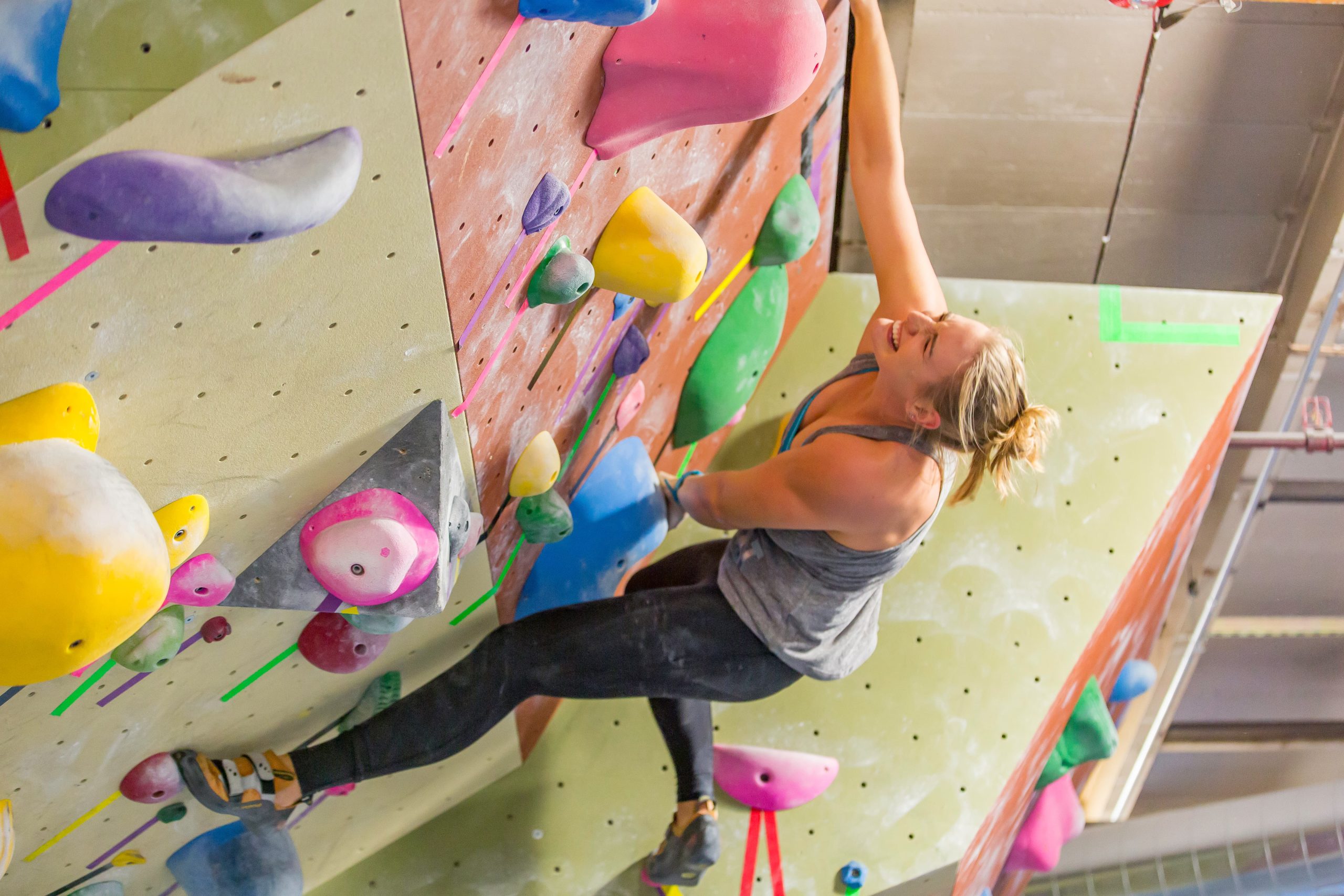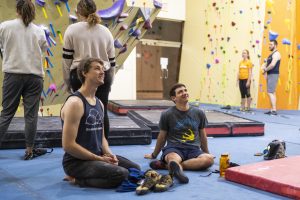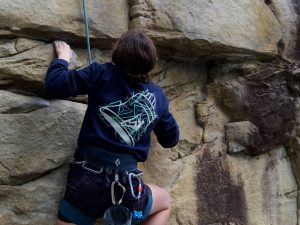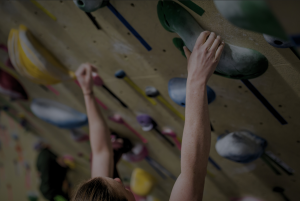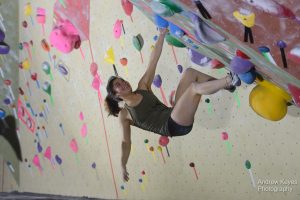Upper Body Twists
So far in our articles of twist-locks we have concentrated on our lower body, which is where the bulk of the work happens. But if you noticed at the very start, we mentioned that we were discussing the first twist. Is there a second? Yes, there is.
Twist-Locks and Side-Pulls
Before we discuss this in detail, it is important to remember that all twist-lock positions should be done from side-pulls, or eventually, underclings.
This is because the second part of the “twist” is done with the upper body. As a result, when twisting, climbers will be pulling sideways on a hold, toward their chest.
This means that for flat holds or gastons, we would pull along the edge of a hold, i.e. pull along the its major axis as opposed to against it. Side-pulls (and in some circumstances, underclings) do not have this problem.
How-To
With a back-step or a drop-knee, this portion of a twist-lock is fairly straightforward. For clarity we will assume you are standing on your left foot (the motion point) and pulling off of your right hand.
Positioning
First, begin as you would for a back-step or drop-knee described in the previous articles, twisting your hips into the wall, aiming for the lower body lock.
Then, as your left hip-bone nears the wall, you twist your left shoulder toward the wall, and reach for your next hold with your right hand. This process should feel almost like you are reaching across your body. The tighter the turn, the more leverage you get, and the further you can stand up.
Of course, this same process will work on the other side of your body. All you have to do is swap your left foot for right and right hand for left.
One Fluid Movement
There is a key to developing a good feel for this part of the move (and, indeed for twist-locks in general). Keep in mind that, while we can describe these moves more clearly “step-by-step”, the skill must be executed as one fluid movement from start to finish.
Many new climbers when learning back-steps and drop-knees have a tendency to twist their lower body. They lock it in place, pause, and then try to complete the upper body twist. They grab their hold, breaking the movement into two or three distinct sections.
Unfortunately, this approach kills all of your momentum, placing greater strain on your arms and increasing the effort to complete the move. The better approach is to allow the twisting of your hips to carry into the upper body twist. This uses your lower body momentum to facilitate the completion of the move.
Straight-Arming
What does this have to do with straight-arming? The most effective twist-locks start from a straight arm position.
From here, we lean out on this arm, keeping it straight for as long as possible, while our hips twist into the wall. At the very end of the move we then bend our arm as we twist our shoulder into the wall, ending up with our chin nearly tucked into our outside shoulder. This allows us to use our own momentum (rather than simply our muscles) to get higher up the wall.
Climbing At Speed
This leads us into climbing at speed, a concept we discussed in more detail in a previous article. But before you read about that, we need to finish our discussion twist-locks with a more advanced skill: the reverse flag.
All material is reprinted with the permission of the author. Copyright 2022 David H. Rowland. All rights reserved.


